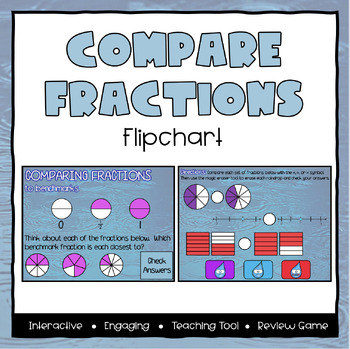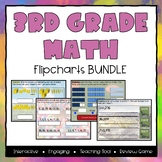Comparing Fractions ActivInspire Flipchart - Third Grade
- Flipchart File
Also included in
- These files are Activinspire Flipcharts that are designed to work with Activinspire program only.**Files will NOT open in PowerPoint or Smart Notebook.This product includes 34 ActivInspire Flipcharts that cover third grade math standards. Each lesson includes different examples given with many waysPrice $50.00Original Price $85.00Save $35.00
Description
This is a Activinspire Flipchart that is designed to work with Activinspire program only.
**This file will NOT open in PowerPoint or Smart Notebook.
The flipchart has 25 slides that focus on the concept of comparing proper and improper fractions, including:
- comparing fractions to benchmarks of 0, 1/2, and 1
- comparing fractions with like numerators (models, number lines, and no models)
- comparing fractions with like denominators (models, number lines, and no models)
- representing equivalent fractions
Several different examples are given with many ways for students to come to the board to practice the skill. Most pages are self-checking so students can check their work.
At the end of the introduction and practice, there is a short game that students can play. This will give students more practice with the skills in an exciting way!
The flipchart is designed for whole-group but could be adapted for small group or individual student learning!






